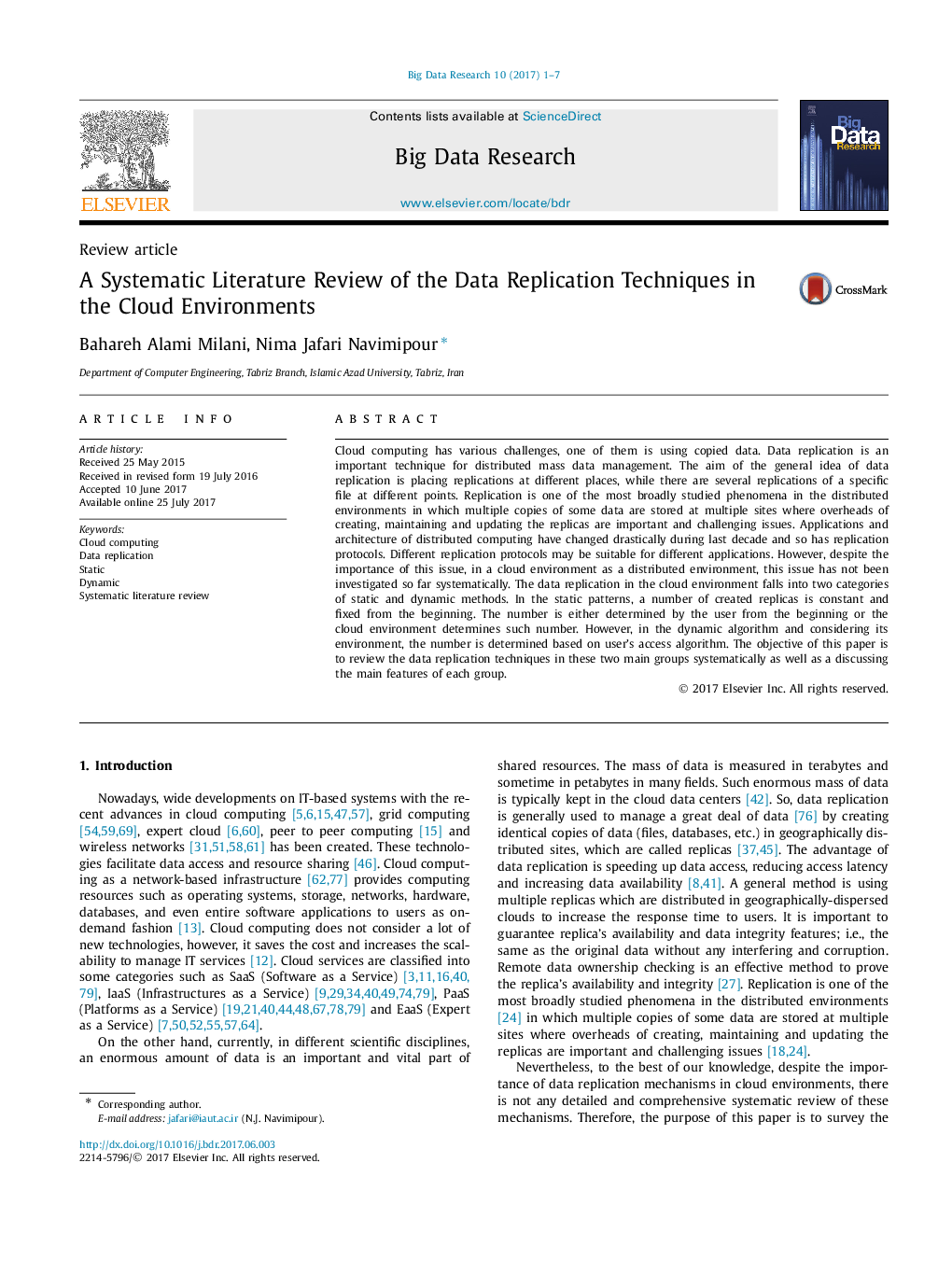| Article ID | Journal | Published Year | Pages | File Type |
|---|---|---|---|---|
| 6868374 | Big Data Research | 2017 | 7 Pages |
Abstract
Cloud computing has various challenges, one of them is using copied data. Data replication is an important technique for distributed mass data management. The aim of the general idea of data replication is placing replications at different places, while there are several replications of a specific file at different points. Replication is one of the most broadly studied phenomena in the distributed environments in which multiple copies of some data are stored at multiple sites where overheads of creating, maintaining and updating the replicas are important and challenging issues. Applications and architecture of distributed computing have changed drastically during last decade and so has replication protocols. Different replication protocols may be suitable for different applications. However, despite the importance of this issue, in a cloud environment as a distributed environment, this issue has not been investigated so far systematically. The data replication in the cloud environment falls into two categories of static and dynamic methods. In the static patterns, a number of created replicas is constant and fixed from the beginning. The number is either determined by the user from the beginning or the cloud environment determines such number. However, in the dynamic algorithm and considering its environment, the number is determined based on user's access algorithm. The objective of this paper is to review the data replication techniques in these two main groups systematically as well as a discussing the main features of each group.
Related Topics
Physical Sciences and Engineering
Computer Science
Computational Theory and Mathematics
Authors
Bahareh Alami Milani, Nima Jafari Navimipour,
